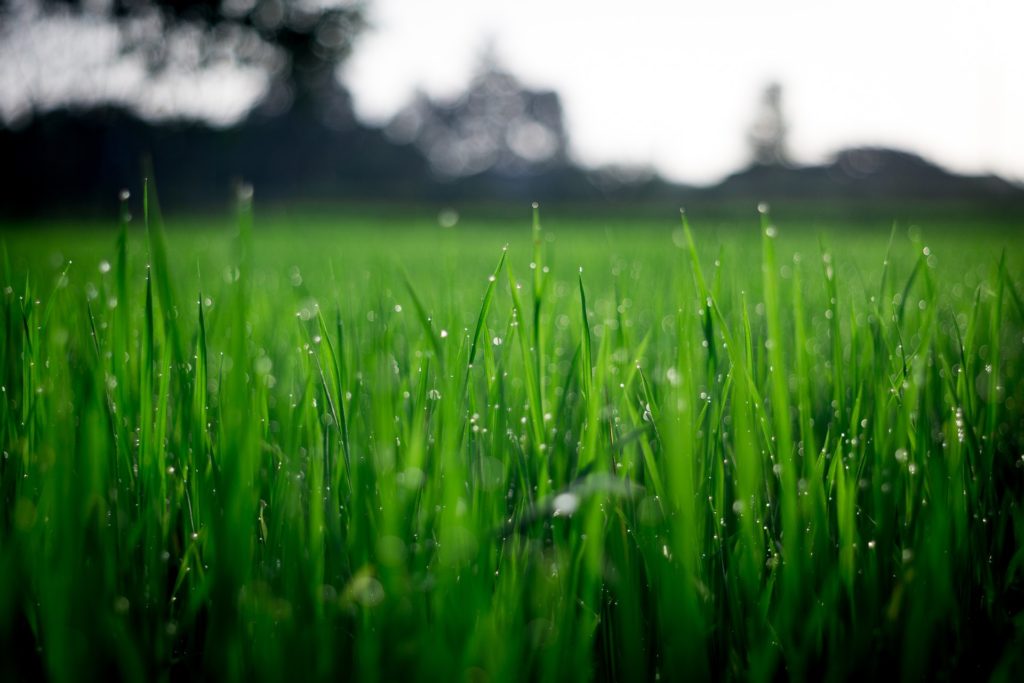During the summer months, keeping your lawn green can be a daunting task. A green and healthy lawn doesn’t have to be such a hard task. With a little research and planning, you too can have a beautiful lawn this summer.
Benefits Of A Healthy Lawn
The most obvious benefit a sparkling, green lawn can provide a homeowner is an improved aesthetic appearance. Well-manicured grass significantly enhances a property’s curb appeal and might increase its monetary value.
That said, well kept grass can also elicit several notable environmental attributes. In fact, scientists suggest such environmental components can mitigate flooding, curtail erosion caused by wind and water buildup, produce a cooling effect, stimulate the breakdown of organic chemicals and serve as a noise control method.
Tips For Establishing And Maintaining A Green Lawn
Lawn care experts maintain that home or property owners who practice the following six tips stand a better chance of creating and, more importantly, keeping healthy, green grass during the spring and summer seasons:
Administer Appropriate Watering
Healthy grass needs to be watered regularly. That said, individuals charged with the responsibility of lawn maintenance must follow proper hydration procedures. Merely watering grass willy-nilly will not suffice and could actually harm the surface.
Landscaping professionals opine that appropriate watering schedules should be determined by how long or short grass is cut. Short cut grass must be hydrated on a more frequent basis. Though longer grass might require fewer hydration cycles, those that are administered must penetrate deep into the roots. Additionally, said industry insiders maintain that hydration cycles should always be performed during the early to mid-morning hours to prevent rapid evaporation.
Employ High Mower Settings
Numerous lawn care professionals caution property owners not to cut the grass too short. Said experts argue that longer roots ultimately lead to greener, healthier lawns because longer roots possess a greater capacity to obtain ground-laden moisture during warmer temperatures. Enabling the growth of longer grass can be attained simply by placing a mower‘s setting on high.
Practice Weed Control
Fewer issues prove more detrimental to a lawn health and aesthetic appeal than weeds. Landscapers opine that property owners can practice adequate weed control by applying chemical preparations designed for such purposes. That said, these products contain potentially caustic substances. Homeowners should not indiscriminately treat their lawns with these preparations. Before initiating any weed-killing initiative, individuals are encouraged to inquire with environmental and landscaping professionals to gain their insight on the most efficient and safest products to employ.
Adhere To A Strict Fertilizing Schedule
Lawn maintenance entities suggest that a lawn’s fertilization process be administered over four stages. Said professionals suggest that the first occur in mid-spring, the second in June, the third in mid-summer and the final during the fall when winterizing the grass. Fertilizers not only stimulate the grass’s growth but also inhibits the emergence of weeds and insects.
Aerate Grass
Landscapers opine that aeration is a sometimes overlooked but critical aspect of optimal lawn maintenance. Special apparatuses called aerators are employed for this purpose. These items extract tiny plugs of soil from the lawn.
This procedure is thought to yield several positive results. First, these openings will enable important substances like fertilizer and water to penetrate at a deeper and faster pace. Additionally, the air-to-soil rate is significantly improved, which could stimulate a more rapid growth rate. Moreover, aeration reduces soil compaction, which gives roots more room to grow. Industry insiders suggest that the fall is the best time to complete this process.
Use Sharp Mower Blades
Lawn maintenance professionals suggest the mowing process should always be executed utilizing a sharp blade. Sharper blades are thought to produce even cuts. Weaker or dull blades are said to yield choppy, uneven cuts that make the lawn look uneven and unkempt.




